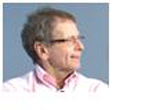 I am writing this after attending the 25th European Resuscitation Council Symposium in Krakow, where colleagues from Europe and beyond, and across a range of specialties, gathered to explore developments in understanding the management of cardiac arrest.
I am writing this after attending the 25th European Resuscitation Council Symposium in Krakow, where colleagues from Europe and beyond, and across a range of specialties, gathered to explore developments in understanding the management of cardiac arrest.
It will come as no surprise that one of the topics of discussion was non-technical skills, particularly team leadership. Among the sessions there was a round table discussion that explored this specifically, and with a focus on leadership. Among the questions asked was: “Is a team leader born or made?” The questions were accompanied by some photographs of leaders: Mahatma Gandhi, Martin Luther King, and Nelson Mandela, among others.
Slightly less than half of the audience responded that they believed that leaders were, in fact, the product of genetics rather than socialisation. The speaker then went on to explore this notion and concluded that perhaps people could be trained to become leaders. The nature of the training programme was left unspecified. The implication, however, was clear: that leadership could be seen as a set of personal characteristics and that some people might not fit the role.
What struck me about this presentation and the discussion that followed was that when we talk about leadership in the context of the team management of a medical crisis, we are not thinking about the shared qualities of the names listed above, nor, for that matter, any other set of leaders who you might construct, based on different inclusion criteria: Stalin, Hitler, Pol Pot; or Berlusconi, Palin, Blair.
Rather, what we should be looking at is a phenomenon that is visible in groups, where leadership arises naturally from the need to engage in a particular task. This might mean that leadership is, over time, a shared phenomenon that manifests itself in different people at different times during an evolving context. Picture this set of circumstances:
A nurse is called by a healthcare assistant to a patient who has suddenly collapsed. The nurse gets further help from staff on the ward and asks the healthcare assistant to phone for cardiac arrest team. Along with a basic life support trained junior colleague, she initiates CPR. After a short period of time a junior doctor arrives. She begins to initiate a handover, but it is soon obvious that he lacks some confidence in the management of the arrest, so she rotates him into providing chest compressions. Shortly afterwards, the arrest team arrive and the lead clinician asks for an update, which she is given. She then takes over the management of the case.
In this case, leadership is passed from the healthcare assistant to the nurse and then on to the doctor. At no point did the circumstances demand a dominant, inspirational leader with a particular disposition, (a Mandela, for example), to emerge. Rather, the accident of situation, led to the emergence of a leader. Leadership then, is determined by situational, rather than dispositional factors.
Competing interests: I have read and understood the BMJ Group policy on declaration of interests and declare the following interests: I am lead educator with Advanced Life Support Group, a member of its Human Factors Working Group and co-author/co-editor of Human Factors in a Healthcare Setting. Oxford: Wiley-Blackwell.
Mike Davis is lead educator with Advanced Life Support Group in Manchester and also works with a number of other organisations involved in instructor training. He has a background in humanities and social science and worked in higher education until 2005 when he became a full time consultant in continuing medical education. He is a fellow of the Academy of Medical Educators.